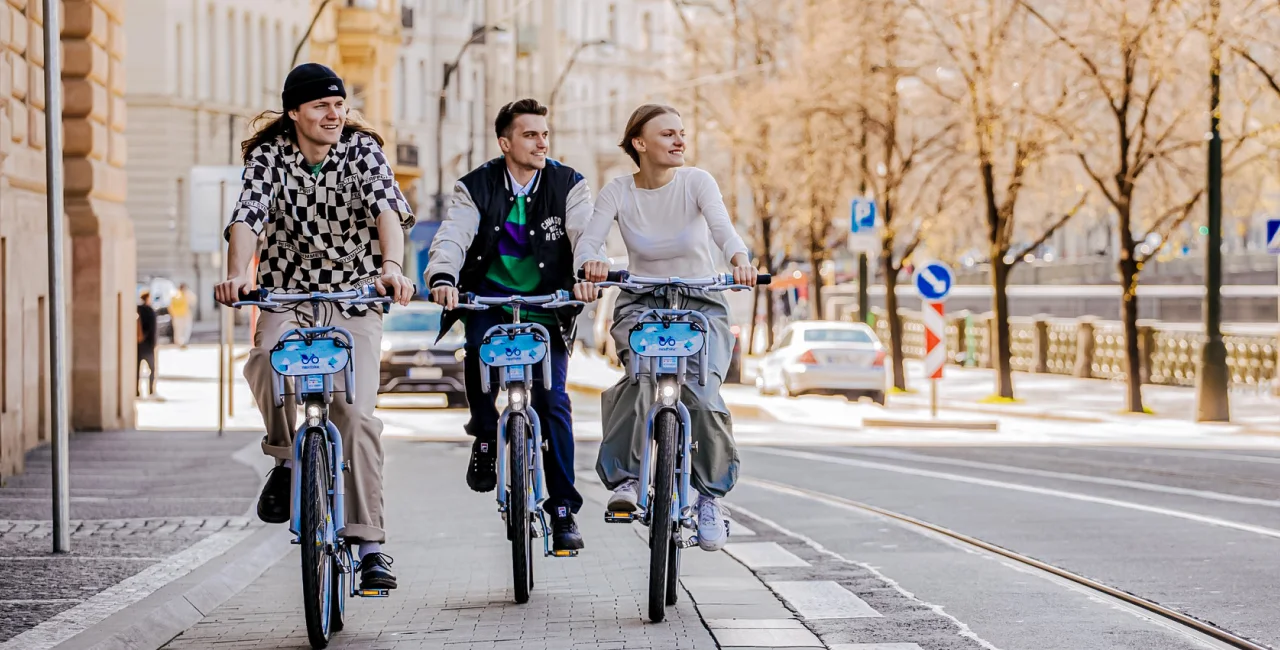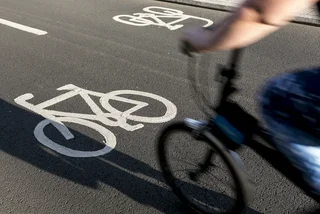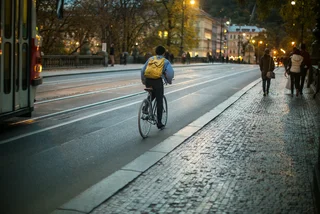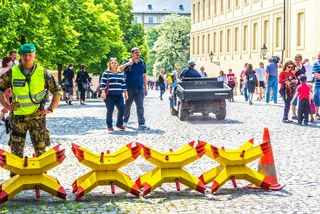With the cycling season underway in Czechia, the City of Prague has announced it will invest CZK 137 million to improve cycling infrastructure in the capital, including developing existing cycle paths and creating new ones. Notable events such as the Bike Fest exhibition at the end of this week and an upcoming nationwide bike-to-work initiative also put cycling in the spotlight this spring.
Expanding the existing network
“Our priority is to consolidate the hitherto fragmented infrastructure for people on bicycles into usable, functional sections to increase the attractiveness of cycling for a wide range of residents," chairwoman of the City Council Commission for bicycle transport Bára Soukupová said in a recent press release.
PARTNER ARTICLE
The capital wants to develop its current cycle routes – spanning from A1 to A9 – by adding stretches of kilometers to the existing network. Deputy Mayor for Transport Zdeněk Hřib remarked, for example, that earlier this month Prague opened an additional 700 meters of cycle path in Holešovice.
EXPAT TIP
The Na kole Prahou and Bikemap applications, available on Android and Apple's iOS, display Prague's current cycle routes and help you plan your two-wheeled journey. The former also has an English-language website that shows all bike routes.
Prague will also add an additional 1,700 meters to the A1 cycle route, connecting the Vyšehrad railway bridge to the soon-to-be constructed Dvorecký bridge. The A7 cycle route, which runs in the south of the capital, will also soon get an extra 900 meters between Kačerov metro station and Krč. The capital will work on parts of the A2 route on Podolský nábřeží, which runs adjacent to the Vltava River.
Brand new paths and sections
Work will also begin on a cycle path on the large Nádražní Street in Prague 5, which runs parallel to the Vltava and lies opposite Podolský nábřeží. A new cycle path between Stromovka and Varhulíková Street in Prague 7 will also open soon. Additionally, Prague plans to extend cycle routes in Prague 14, 19, and 22.
Notably, the City of Prague also plans to develop cycle access within the framework of ongoing road reconstructions. For example, developers will create two new cycle lanes as part of current work on Hartigova Street in Žižkov. The large-scale reconstruction of the Sokolovská-Českomoravská intersection in Prague 9 also counts on new cyclist crossings. There will be separate cycle lanes on the Dvorecký bridge that is currently under construction.
Previous projects' successes
Hřib also noted the successes of previous cycling infrastructure projects seen in the past two years. These include the addition of the A1 cycle path under the Mánes Bridge, and four new cycle-friendly footbridges put into operation, with the most notable being the Štvanická footbridge connecting Karlín and Holešovice, linking the A1 and A2 cycle routes.
All of these efforts have greatly improved cycling conditions and created new connections that were previously unavailable, the City of Prague says. Hřib also emphasized that such projects help relieve traffic congestion and improve urban mobility. According to the Global Bicycle Cities Index 2022, Prague was ranked 73rd among 90 cities, scoring 25.87 points out of 100 – Prague is trying to become more cycle-friendly.
Ride-sharing, cycling to work, and a festival
In addition to improving infrastructure, Prague is also focused on supporting shared bike use. Last year, there was a significant increase (of one-third) in people bikesharing through the PID Lítačka application, with more than 750,000 trips taken. The average journey time in 2023 was just five minutes, and around 80 percent of people used the service repeatedly.
CYCLE FOR FREE
Everyone who has a valid electronic pass for Prague, whether on your physical Lítáčka card, on your PID Lítáčka phone application, or linked to your payment card, can use the pink Rekola cycles or blue Nextbike cycles dotted around the city. You may use them for two rides, each lasting up to 15 minutes. For the Rekola bikes, you can extend rides to 30 minutes for free if you pay CZK 59 once a month. Find more information, in English, here.
An annual bike-to-work initiative, named Do práce na kole and run by sustainable transport company AutoMat, gets underway in May. Lasting the whole month, it promotes cycling and exercise in the country, allowing people to join as a team. Participants can join as a team and track how many kilometers they have cycled. Registrations are open until the end of the month.
The company also calls for better cycling infrastructure in Czechia’s cities. AutoMat is currently appealing to the government to help increase cyclists’ and pedestrians’ safety. "Among the most common reasons why people do not cycle around Prague is the fear of moving between motor vehicles. Experience from abroad shows that a high-quality and safe infrastructure for cyclists is much more fundamental in changing traffic behavior than, for example, the weather,” AutoMat public relations co-ordinator Anna Kociánova said last year.
The upcoming Bike Fest exhibition that will be held in Prague 7’s Výstaviště on April 27 and 28 showcases different types of cycles, sees special performers (doing freestyle BMX tricks, for example), and offers educational workshops. A panel discussion on Saturday afternoon entitled “Does urban cycling belong in Prague?” will also explore the city’s suitability for cycling and what prevents it from becoming a proper “cycling city.”












 Reading time: 4 minutes
Reading time: 4 minutes 
































